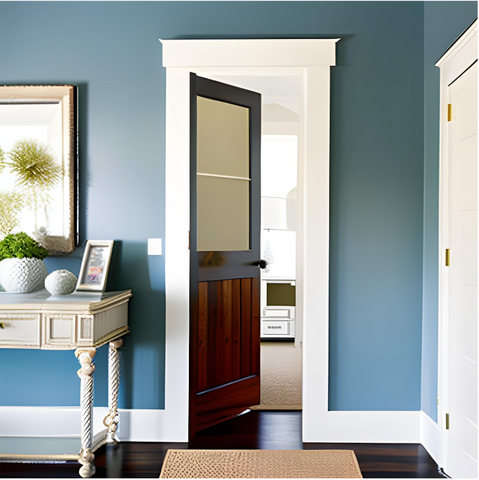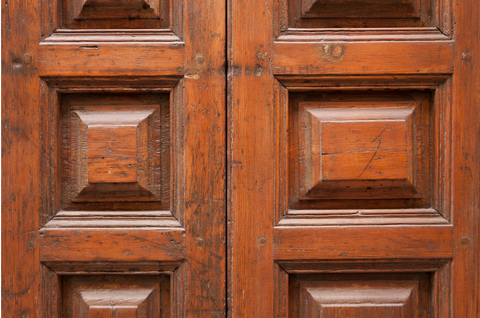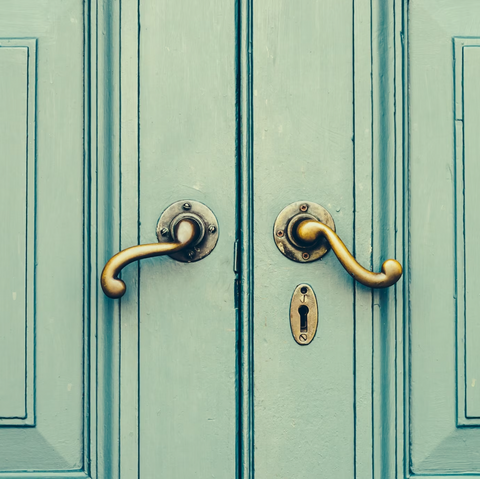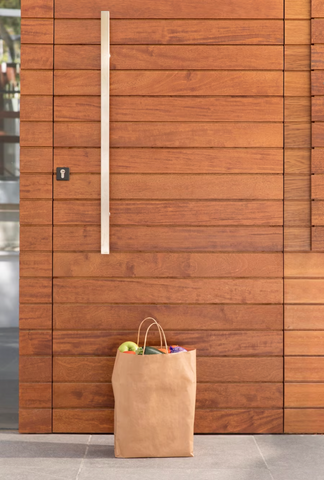My shopping cart
Your cart is currently empty.
Continue Shopping
Interior doors play a vital role in the overall aesthetic appeal of your home. While many doors come in smooth and plain finishes, adding texture to old doors can elevate their visual impact and bring a unique touch to your interior design. Textured doors can add depth, character, and interest to any space. In this article, we will explore the steps and techniques involved in adding texture to interior doors, allowing you to create a stunning focal point in your home.
Before you begin the texturing process on closet doors, it's essential to prepare the door properly. Start by removing the door from its hinges and placing it on a sturdy work surface. Clean the door's surface thoroughly, removing dust, dirt, or residue. If the door has an existing finish, you may need to sand it lightly to create a smooth and even surface for the texture to adhere to.
There are several texture tools available that can help you achieve different effects on your interior doors. The choice of texture tool depends on the desired outcome and the level of texture you want to accomplish on flat doors. Some standard texture tools include textured paint rollers, brushes, sponges, and stencils. Experiment with different tools and techniques to find the one that best suits your vision for the door.

Once you have chosen your texture tool, it's time to apply the texture to the door. Dip the texture tool into the selected material, such as textured paint or plaster, and remove any excess. Begin applying the surface to the door using even strokes or dabbing motions, depending on your tool.
Work in small sections and ensure the texture is evenly distributed across the door's surface. Allow the texture to dry according to the manufacturer's instructions before moving the project on to the next step.
After the texture has dried, you may need to sand the door to achieve a smooth and uniform surface. Use fine-grit sandpaper to gently buff the textured areas, careful not to remove too much of the texture. This step helps to create a cohesive and visually pleasing finish to the panel door. Once the sanding is complete, remove dust or debris from the door's surface.
To further enhance the textured look of the plank door and protect the door, consider painting it in a color of your choice. Select a paint that complements your interior design and enhances the texture.
Apply the paint evenly using a brush or roller, allowing each coat to dry before applying the next. Once the paint is dry, seal the door with a clear coat finish to protect the texture and provide a durable surface. The clear coat finish adds a glossy sheen and ensures longevity.

To fully embrace the textured look of your interior door, consider adding accessories that complement the overall design. Decorative elements such as molding, trim, or hardware can further enhance the visual impact of new doors and add a touch of elegance. Choose accessories that align with your style and the theme of the room.

Proper maintenance is crucial to preserve the beauty and longevity of your textured doors. Avoid using abrasive cleaners or harsh chemicals that can damage the texture or finish of panel doors. Instead, clean the doors regularly with a soft cloth or sponge and mild detergent. Be gentle when wiping the surface, and avoid scrubbing vigorously.
In case of any damage or wear, touch up all the details and textured areas with matching paint or texture material to maintain a seamless look. Regularly inspect the doors for deterioration or cracking, and address them promptly to prevent further damage.
Adding texture to interior doors is an excellent way to enhance your home's visual appeal and character. By following the steps outlined in this article, along with MyCityDoors.com's expert guidance, you can transform plain doors into captivating design features. From preparing the wicket and choosing the right texture tool to applying the texture, sanding, finishing, and adding accessories, MyCityDoors.com's comprehensive approach ensures a stunning result. Embrace the creative process, experiment with different textures and techniques offered by by our store, and enjoy the fun and rewarding transformation of your interior doors, making them a true reflection of your personal taste and creativity. Let our store be your partner in elevating your home's design to new heights with textured interior doors that leave a lasting impression on all who enter.
You can add texture to various interior doors, including wood, MDF, and hollow core doors. However, the preparation and texturing cost may vary slightly depending on the door material.
Some typical materials used for creating texture on doors include textured paint, plaster, joint compound, and fabric or wallpaper.
Yes, it is possible to remove the texture from a door. Depending on the material used and the extent of the surface, you may need to sand it down or use chemical strippers to obliterate the texture.
You can apply texture to specific door areas, such as panels or borders while leaving the rest smooth. This selective texturing can create an exciting contrast and focal point.
Sealing the textured door with a clear coat finish is recommended to protect the texture and provide durability. It also adds a glossy sheen and enhances the overall appearance of the door.